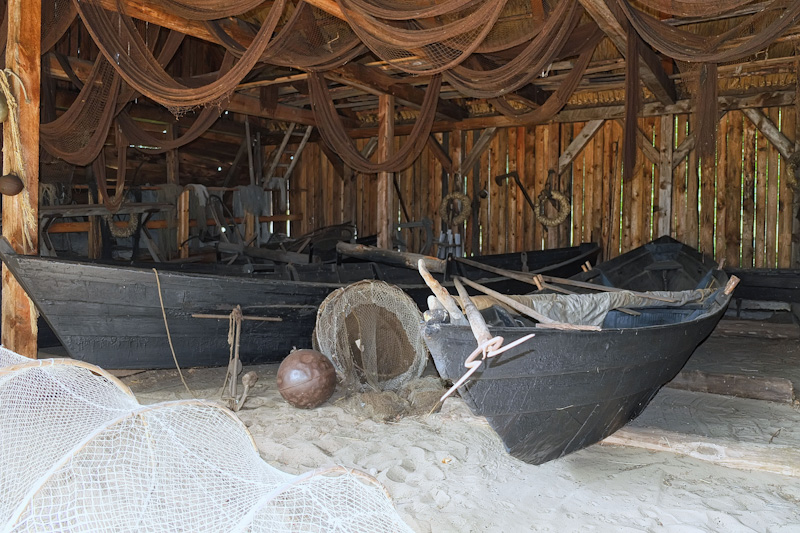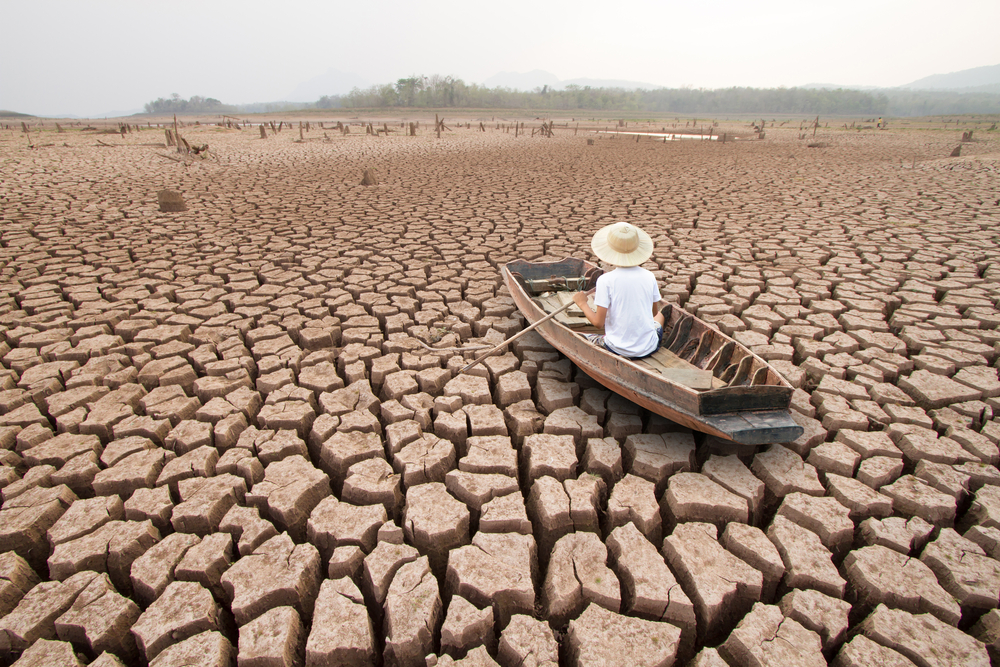Regardless of one’s political stance on global warming, it’s undeniable that it is taking place right now, and it is impacting our daily lives.
Arid regions are becoming even drier, while wildfires are now a year-round occurrence in the western hemisphere. Moreover, hurricanes are forming earlier, more frequently, and with greater strength than before, and the melting of ice caps is causing ocean levels to rise, posing a threat to coastal cities and their infrastructure.
The National Oceanic and Atmospheric Administration (NOAA) states that 40% of the US population resides in densely populated coastal regions. Given the effects of flooding, shoreline erosion, and storm-related structural damage, this should be a concern for a large number of people.
According to NOAA, sea levels have been rising globally for the past century, with an accelerating rate of increase in recent decades. Both government and private sector scientists concur that carbon emissions significantly contribute to the current situation.
So what does this mean for those living in coastal regions?
Rising sea levels can cause water damage to coastal property even during normal tidal changes and, on the extreme end, result in devastating and potentially fatal storm surges. According to NOAA, this could affect urban infrastructure such as roads, bridges, water sources, energy, and sewage facilities, among others, leading to a potential major catastrophe. This issue cannot be ignored anymore as it poses a grave danger.
NOAA cites two primary reasons for the global rise in ocean levels: warming water causing expansion and increased melting of land-based ice adding water to the oceans.
According to a report by the National Aeronautics and Space Administration (NASA), the melting of the Greenland and Antarctic ice sheets could potentially double the projected sea-level rise by 2100. If the current rate of ocean rise continues, the report estimates a 26-inch increase by the same year.
What should we do?
Though the year 2100 is still far off, the impacts of rising sea levels are being felt now. US naval bases along the Atlantic and Gulf coasts, such as the Naval Air Station Key West, are struggling with flooding and require significant changes, at a cost to taxpayers potentially in the billions.
Coastal property owners and municipalities are also grappling with the issue. Cities like Boston are experiencing flooded tunnels and issues in underground transit systems. New York and New Jersey were severely impacted by Hurricane Sandy, which flooded subway tunnels, knocked out underground power and gas lines, and devastated homes in its path. New Orleans, already below sea level, and Key West, barely above sea level, are especially vulnerable to future impacts.
What can be done to address this pressing issue?
According to scientists, even if there were a significant decrease in carbon emissions – the primary cause of global warming – sea levels will continue to rise for centuries. This is due to the time required for oceans to cool and ice sheets to stabilize. Hence, the rise in sea levels is a permanent reality and will result in more frequent flooding in the future.
It is important to focus on evaluating current damage, fixing it, and preventing future damage. It is also necessary to prepare a plan in case of a need to evacuate to higher ground.
Inspect your home for any signs of damage. Check for cracks in the foundation, new water damage, and erosion. Living near the ocean means experiencing storm surges, but have the conditions changed?
Have the surges or even high tides become stronger and more damaging?
Are they reaching farther inland?
Do roads frequently flood, and is the water deeper, or is there more debris noticeable?
It’s important to keep track of these observations as they will aid in future planning. Local governments are making efforts to mitigate the impact of rising sea levels, but property owners can also take steps to protect their property and families. The approach will vary depending on location. For example, a property owner near the water will have different solutions compared to someone living further inland.
Learning from Nature is always a good starting point
Nature has had a long history of coping with rising sea levels and the resulting consequences. Barrier islands, made of sand, serve as the initial line of defense, slowing down the impact of storm surges. Sand dunes with dune grass then absorb most of the energy from the surge and retain a significant amount of water. The final line of defense is the salt marshes, which work like sponges and absorb what was not absorbed by the sand dunes.
Preserving natural barriers is crucial in mitigating the effects of rising sea levels. Barrier islands, sand dunes, and salt marshes are Nature’s first line of defense against ocean surges and storm damage. These areas absorb shock and water, slowing down the impact of ocean surges and reducing damage to coastal properties. By protecting these natural barriers, you are not only helping to preserve the environment but also safeguarding your property and family.
Building on or filling in these natural barriers can have disastrous effects. It can increase the vulnerability of your property and surrounding areas, as the absence of these barriers can result in greater ocean surges, flooding, and damage. Replanting dune grass and other salt-tolerant flora can help maintain the integrity of the dunes and provide additional protection from ocean surges. By preserving these natural barriers, you can make a positive impact on the environment and reduce the impact of rising sea levels on your property and community.
Use man-made protections
Seawalls, bulkheads, and jetties have been popular choices for people who want to protect their property from incoming seawater. However, it is important to understand that these structures do not prevent water damage completely. They only help divert water to prevent it from reaching the land, but over time the land near these structures will erode, leading to the failure of the wall.
This is because the pressure of the water can cause the sand at the base of the wall to erode, making it weaker over time. Therefore, if you are relying on these structures to protect your property, it is crucial that you maintain them and be proactive in checking their condition.
It is also important to keep in mind that these structures only work effectively if everyone in the community is doing the same thing. A seawall, for example, that is not being maintained by other property owners in the community will be less effective, as the water will still reach unprotected land.
If a seawall fails, it can be an expensive and time-consuming process to rebuild it. Therefore, if you are planning to use these structures, it is important to consider the cost and responsibility involved in maintaining them over time.
Raising structures is a cost-effective solution to prevent damage caused by rising sea levels and flooding. This method involves constructing homes or buildings on stilts that are high off the ground, typically made of strong materials like telephone poles. By elevating the structure, it can protect it from being damaged by the incoming water.
This technique is widely adopted in flood-prone areas, particularly in South Louisiana, where the water can flow freely underneath the building without causing any harm. This method helps to ensure the safety of property and its inhabitants, as well as reducing the cost of repairs and maintenance in the long run.
In addition to the traditional methods of seawalls, bulkheads, and jetties, you can also combine the best of both Nature and technology to protect your property.
One effective method is the integration of natural barriers such as oyster beds and mussel reefs or offshore rock and rubble deposits with man-made structures like seawalls and bulkheads.
Another way is to create a “living shoreline” by planting sea grass and other vegetation to help stabilize the soil and prevent erosion. This not only provides a barrier against rising sea levels but also enhances the overall ecological health of the area.
In conclusion, it is important to find a balance between utilizing technology and preserving natural resources in order to effectively tackle the rising sea levels and protect your property and community.
Making a plan
It is important to have a solid evacuation plan in place in case rising sea levels pose a threat to your safety. Delaying evacuation until the last minute can be dangerous and leave you with limited options. Coastal communities are often congested with traffic, and many areas have limited roadways leading in and out. This is why having multiple escape routes is crucial.
Plan ahead and make sure you have a clear understanding of all possible escape routes in case of an emergency. Don’t take any chances with your safety. If you are advised to evacuate, it is best to do so immediately. By having a well-thought-out evacuation plan in place, you can ensure that you and your loved ones can evacuate safely and efficiently.
In the event of an evacuation, it is important to have a comprehensive and well-thought-out plan to ensure the safety of you and your loved ones. Along with finding a safe shelter, it is crucial to have enough fuel to make it there, as the roads can become congested, and fuel consumption may be higher. It is recommended to keep your vehicle full and to carry extra fuel if possible. Having multiple escape routes is also essential in case one becomes blocked by debris or flooding.
In addition to having a safe destination, it is important to have a backup plan in case you are unable to evacuate. In this scenario, having a shelter that is well-stocked with supplies for up to a month is crucial. This can include food, water, medicine, and other essential items. Keep in mind that popular destinations and hotels in the safe zone may quickly become filled, so it is important to have a designated safe house in place.
Supplies to always have on hand
If you are unable to evacuate and need to shelter in place during a storm, it is crucial to have essential supplies on hand. Here is a list of items that must be included in your emergency kit:
WATER: Access to safe drinking water is essential for survival. The recommended amount is 1 gallon per day per person for both drinking and hygiene needs. This amounts to 30 gallons per person for a one-month supply. It’s best to store water in water-safe containers, which will save space and money.
FOOD: Make sure to have non-perishable food items that don’t require cooking, such as canned meats and vegetables or freeze-dried meals. Suppose you have the means to cook food safely; consider including some food items that need to be prepared, such as pasta or rice.
COMMUNICATION: Communication is critical during a disaster, so make sure your cell phones and other electronics are fully charged. Consider having rechargeable two-way radios as well as hand-crank radios, which can be used to receive emergency broadcasts even if the power is out.
POWER: Having a generator on hand is ideal, but make sure to only use it when it is safe to do so. If it’s not safe to use a generator or if you run out of fuel, portable solar panels can provide enough power to keep your cell phones charged and provide some light.
SANDBAGS: Sandbags can be a valuable tool in preventing water damage during a storm. At the first sign of an impending storm, start collecting empty sandbags and fill them with sand. Build a wall around your home to keep water out until help arrives. While sandbags are not a perfect solution, they can provide a level of protection until assistance arrives.
Remember, being prepared is key to surviving a disaster. Make sure to have a comprehensive plan in place and have all the necessary supplies ready to go.
Concluding
The problem of rising sea levels, and the adverse effects it has on coastal communities, is a rapidly growing concern that must be addressed. The extent of the damage is still uncertain, but it is widely agreed upon that the situation will only continue to worsen in the future. With this in mind, it is crucial for individuals to take proactive steps to ensure the safety and survival of themselves and their loved ones in the face of potential natural disasters.
Preparation is key in this scenario, and it’s essential to start taking the necessary steps to safeguard against the effects of rising sea levels as soon as possible. This may involve updating your emergency plan, stocking up on essential supplies, reinforcing your home, and protecting natural barriers in your area. Additionally, it is also essential to stay informed on the latest developments and recommendations regarding coastal flood protection so you are always up-to-date on the best practices for safeguarding your community.
In conclusion, rising sea levels pose a significant threat to coastal communities, and the need for preparedness cannot be overemphasized. By taking proactive steps, we can help ensure the safety and security of ourselves and our loved ones in the face of potential disaster.








FLAPrepper1 | February 27, 2023
|
Ummm………..NO the ocean levels are NOT rising. This is called Bullshit! Misinformation.
Does anyone remember last year people were freaking out about the city of Venice, Italy “sinking” because of “rising sea levels”. Well, this last week this news came out that many of Venice’s canals are DRY. DRY??? Waiting a minute….last year…..Venice was practically doomed……now it’s DRY? Come folks……stop believing the Climate/Eco Weenies. They don’t have a clue as to what is going on and they just want to make money and control people. You’re getting played.
Here is a link to a story about Venice’s Canals being DRY. https://www.nbcnews.com/news/world/venices-canal-run-dry-low-tides-lack-rainfall-tourism-rcna71943
Oh, and here is the story about Venice SINKING (notice 2022). https://www.bbc.com/future/article/20220927-italys-plan-to-save-venice-from-sinking
What did PT Barnum say………There’s a SUCKER born every minute. Don’t be a Climate Change SUCKER.
John Craddock | March 3, 2023
|
HAHAHA, Great comment!!!! By Al Gore standards we built a house in 2001 12 feet above sea level, with threats of it being flooded in 10 years, well here we are 22 years later and the house is still a 10 minute drive to the ocean. Damn You Al Gore! You lied and I still don’t have ocean front property!!! If you are old enough, during the Regan years they were crowing about global cooling, pulling icebergs down from the artic and Antarctic to maintain sea levels as it was all going to freeze up around the poles and in the mountains! Just one more way to drive money to the guberment and prep sites.
Duncan | March 4, 2023
|
Obviously, otherwise, world leaders and Ex Word Leaders would not be buying coastal properties. Spot on. add to this the 200+ years of a photo of Sidney pier in Australia, Hi tide still hits the same mark as it did 200+ years ago.
Tom MacGyver | February 27, 2023
|
I recently visited my hometown after almost fifty years. I spent a lot of time fishing at a local pier there when I was a kid there. When the tide came in water from the canal would back up through the storm drain and cause minor flooding in the road. Almost fifty years later, there is still minor flooding of that road when the tide comes in. Nothing has changed… AT ALL. If you want to assuage your fears about “coastal flooding,” shut of the TV, your computer, and your phone… and go fishing… “Climate change,” in a nutshell, is Bravo Sierra…
jeffb | February 28, 2023
|
I dont have enough money to live that close to the beach. In fact, Im in the midwest so none of this nonsense affects me directly. I have Climate Change for about 3-4 months out of the year. My personal favorite is global warming!!!
If your near sand, or can buy it, GO POUND IT!! I have a life to live………………..
Eric Miller | March 3, 2023
|
I agree with Tom and FLApreppers. I have lived in the same city for 50 years, and my favorite measuring point is a tidal marsh where two radio ststions have their towers and earth mats. There has been no significant change to the levels over t0se five decades. All oceans are connected, so what goes fr one area should be the sme for all. A recent article pointed out that one anomaly was caused by the tide gauge subsiding.
Lisa | March 3, 2023
|
Yes, the weather is getting eratic. However, that is NOT Warming. We are now starting into global cooling. Beach front property may become the second street in.
My concern is cold. Our houses are not ready, etc. The Maunder Minimum in Europe was ONLY 3-5 degrees colder on average. Did you know the Wheat crops failed?? Grape vineyards north east of paris failed. That 200+ period gave us the US revolution, the French revolution, the christian reformation, and the stradivarius violin.
In the last Ice Age here in America, the western edge of Alaska was tropical; the rest of Alaska and Canada were sheets of glaciers.. Thats how the great lakes were carved and filled with fresh water. The western edge of Alaska is starting to see that change.
Lisa | March 3, 2023
|
Sorry, North West of Paris.
Eric Miller | March 3, 2023
|
Pardon the typos. The font size in the reply box is very small.
Russell B. | March 3, 2023
|
Here in the Interior of the US., the picture is somewhat different. The projection being made by NASA and other organizations is for Extreme Drought.
No, this projection is NOT based on the “El Nino/ La Nina” cycles which are well-known and mostly anticipated on a regular basis. What we are now
experiencing is the early days a historically identified event which has its’ own pattern of widespread devastation such as was seen during the “Dust Bowl” days of the 1930’s:: no rain for extended periods of time stretching into years, wells and aquifers going dry – not just “low levels”, but “NO levels” of water which is projected to pretty much eliminate farming and ranching across the “breadbasket” of the World. This event has already begun and will. .
continue across the Southwest and carrying into the southern and middle plains of America.. Canada, too will be adversely affected with temperatures
which will affect their main feed crops, NASA scientists have already identified the dates and duration of previous events. Some lasted an entire year.
The Earth has been around for 4.5 BILLION years. It has been totally encased in ice twice – the last time that happened. the Earth was frozen for
something like 12.000 years. It thawed about 10,000 years ago when conditions changed and the Sun was able to melt the ice in conjunction with the internal heat of the planet (see Volcanoes ). Based on what we know of the history of the climate(s) of our planet. worry about freezing to death or dying of mass starvation – that is, if the people “leading” the way” don’t get us all blown up sooner.. What do you think the Over/Under is on that?
Bruce | March 4, 2023
|
A drunk on the Titanic yelled out to his fellow shipmates: “Look, the Atlantic Ocean is rising!!”. Anyone who took Geology 101 learned that the tectonic plate containing the
entire Eastern coast of the USA, including NYC, Boston, Philadelphia, Baltimore, Norfolk, Washington DC, Atlanta, and most of Florida is sinking under the
tectonic plate of the Atlantic Ocean. No amount of sacrifice by forbidding the sale of gas stoves or other ridiculous measures will stop the East Coast from sinking. It is inevitable. No evidence yet exists that sea ice is melting in any significant fashion. Now if the ice on land, such as on Greenland, were to melt, or the ice on land in Antarctic were to melt, then the oceans might rise by as much as one foot. A favorite bar trick is to bet anyone that a glass filled above the rim with ice and water would spill over. Since ice is less dense than water (it floats) when the ice melts it takes up LESS space than the water, and will not spill over. Any sea ice that melts will NOT raise the ocean mean level. Due to ocean tides, there are several ways to measure the actual sea level, which changes daily and nightly, and changes with the moon and with the seasons. So at the right times of the day, month, and moon period, there may be excessively high tides that are INDEPENDENT of the weather. Finally, this is the year of high sunspots, which occurs every 11 years. What has been found is a paucity of sunspots. Sunspots mean hotter weather, but a paucity of sunspots mean the sun is slightly cooler, perhaps enough to slightly cool the Earth. That means the pending doom of Earth global warming may not occur at all, at least for the next 11 years.